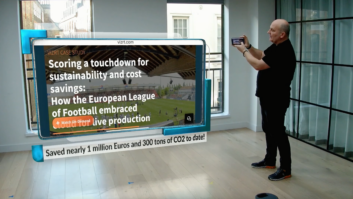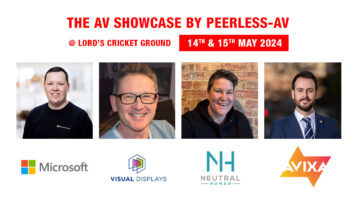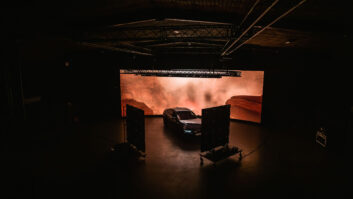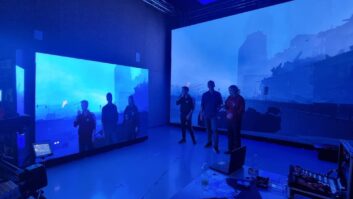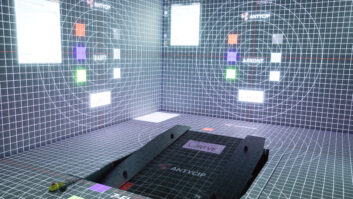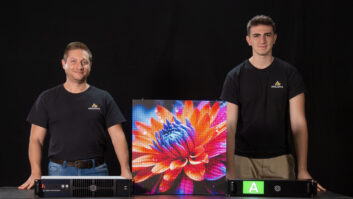Sometimes, it seems Shakespeare’s Hamlet was written almost entirely as a sequence of memorable soliloquies. Among the more famous extracts from them is:
“I could be bounded in a nutshell
And count myself a king of infinite space
Were it not that I have bad dreams.”
Critics have long argued over what this means – but there is a consensus that, as with much of the play, it is about the nature of reality. Hamlet, they say, believes that reality is not absolute, but personal: reality is not necessarily a shared experience, but entirely relative to each individual.
Which brings us neatly to the new realities of the 21st century: augmented reality (AR), mixed reality (MR), and virtual reality (VR) – collectively known as extended reality (XR). There are, unsurprisingly, divergent views on whether XR is a useful term.
Thomas Walter, section manager, strategic product marketing at NEC Display Solutions Europe, believes the term has value. “From an AV perspective, it definitely makes sense to summarise AR, VR and all other sub-segments under XR, since they all follow the same basic concept of combining real-and-virtual environments and human-machine interactions using computing and display technologies.”
Confusing
“From a technical point of view, each of the technologies have applications that are specific to that technology, and as such, it would be confusing to refer to all modes of realities under one name,” says Ross Magri, managing director of Sarner. “However, for the layperson, this is not the case – and if we were to use a single umbrella name to refer to all modes of realities, we would avoid a lot of confusion.”
Frank Reynolds, marketing manager, Antycip Simulation, isn’t so sure. “XR is a good general term to cover the breakthroughs that VR, AR and MR are offering and providing,” he believes. “However, when any specific discussion happens about what the technologies can do, then the terms used will tumble down to VR, AR and MR. To me, it’s like using MS Office as the general terms for the tools we use on our PCs – but then talking about MS Word, MS Excel and MS PowerPoint. Like these terms, most conversations will be at the specific level rather than the general one.”
Stuart Hetherington, CEO of Holovis, is clear. “VR, AR and MR are very different platforms and, although they can be described under the same generic terms – such as XR or emerging technologies – they have very different use cases and applications.”
XR is, then, perhaps a term of convenience rather than a meaningful one, and may even confuse rather than clarify: the fact is that applications of VR, AR and MR are likely to be very different.
‘In my opinion, mixed reality has the highest potential as it allows us to merge the real world with the virtual one’
Real benefits
Spiros Andreou, service delivery manager at integrator CDEC, explains how his company approaches the problem. “We are very much engaged with MR from the perspective of providing a collaborative virtual classroom and believe that the concept has real benefits,” he notes. “The impression, however, is that XR means wearing an uncomfortable helmet and goggles, with dizzying graphics and disorienting multi-channel audio. That’s led us to separate the various roles and talk about ‘Headset VR,’ ‘Mobile Device AR’ and ‘Classroom MR’ so that our customers are on the same page.”
That uncertainty about terminology didn’t stop ISE hosting its second XR Summit this year, however – and what was notable about ISE 2019 was that it saw no fewer than 16 exhibitors identifying as potential providers of VR and/or MR and/or AR solutions. Twelve of them had not previously taken stands at the show. There is widespread agreement that this marked a significant step.
“The technology is still in its infancy and occupies a niche market,” says Magri. “However, the fact that there is such a high interest in ISE confirms that companies are realising that there is a mass market application for VR, MR and AR.”
“It’s hugely significant,” believes Reynolds, “as it shows a maturing of the XR community and market, signified by it joining the mainstream AV industry. The real test will be to see if the number grows in 2020 and if those who exhibit this year return. If it does, and they do, then XR will not be a niche side street.”
Opportunities?
Which, of course, begs the question: what are the opportunities that might see those exhibitors – and more of their kind – at ISE 2020? Reynolds is bullish.
“We’re seeing VR CAVEs for shared collaboration on engineering projects at automotive manufacturers, and head-mounted display-based applications for AV experiences such as that at the Kremer collection virtual art museum,” he says. “However, MR has the biggest potential impact in the future, when the device for experiencing it has become established and commonplace. Trans-disciplinary artist Doctor Vesna Petresin currently uses a combination of XR technologies in her sound and visual art programmes, providing her with the ability to expand the audience’s experience beyond what is physically available, while keeping them sharing the experience of being together in the physical world. VR can be isolating, and MR is more realistic than AR.”
Entertainment is a logical application of XR technologies, not least because of their roots in gaming, where mobile, headset and screen-based applications have become widely available. Sarner provides audiovisual engineering for theme parks and visitor attractions, and Magri is clear where the future lies for that application.
“In my opinion, mixed reality has the highest potential as it allows us to merge the real world with the virtual one, whereas VR is an extension of 3D film into a 360° format – which has its application, but nowhere the potential of MR.”
But what about applications that are closer to home for many in the AV industry? So-called ‘gamification’ has long been a topic of discussion in educational circles, and XR is a logical extension of this.
Worth exploring
“We are quite bought into the benefits of MR,” CDEC’s Andreou enthuses. “A big use case for MR in schools is collaborative group work, where the group takes on abstract roles such as camera operator, adventurer, director and co-ordinator to complete a puzzle or challenge together. The possibility for immersive experience which would engage pupils, develop real world collaboration skills and feature topical and curriculum-driven subject matter makes this technology well worth exploring.”
www.antycipsimulation.com
www.cdec.co.uk
www.holovis.com
www.nec-display-solution.com
www.sarner.com

